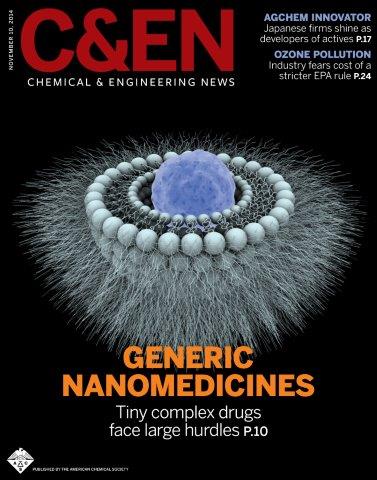FOR IMMEDIATE RELEASE
ACS News Service Weekly PressPac: November 12, 2014
Regulatory and scientific complexity of generic nanodrugs could delay savings for patients
"Covering the Spread"
Chemical & Engineering News
Nanomedicine is offering patients a growing arsenal of therapeutic drugs for a variety of diseases but often at a cost of thousands of dollars a month. Generics could substantially reduce the price tag for patients — if only there were a well-defined way to make and regulate them. An article in Chemical & Engineering News (C&EN), the weekly newsmagazine of the American Chemical Society, details the challenges on the road to generic nanodrugs.
Matt Davenport, a C&EN contributing editor, points out that in small-molecule therapeutics — aspirin, for example — the active ingredient is the primary concern of regulators. For these drugs, making generic versions is a relatively straightforward process. Nanomedicine, on the other hand, is far more complicated. It often involves packaging an active ingredient inside engineered delivery systems made out of materials such as lipids, polymers or carbohydrates. Even slight changes to a nanodrug’s structure can result in a different toxicity level.
To date, the Food and Drug Administration (FDA) has approved dozens of nanodrugs although it has no formal regulatory definition for what a nanodrug is. Such a definition would be a first step toward clearer regulations. The agency currently examines each nano therapeutic on a case-by-case basis and offers guidance to drug makers that is nonbinding for now. Still, in 2013, the FDA signed off on what many consider to be the first generic therapeutic in this category, but no one is sure when the next approval might come.


